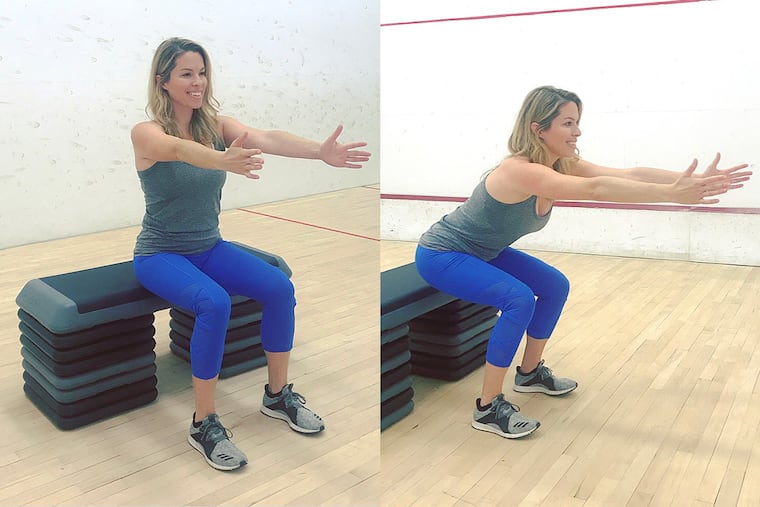Scared of squats? Perfect your form with this step-by-step guide
It's important to understand that you perform squats daily. Every time you bend down to pick up an object or stand from a seated position, you are squatting.

Does the thought of performing a squat make you weak in the knees? If you are scared of squats, you're not alone. This simple hip-hinge movement conjures up a lot of concern among active adults, making it a polarizing exercise. You either love them or avoid them entirely.
Before picking a side, it's important to understand that you perform squats daily. Every time you bend down to pick up an object or stand from a seated position, you are squatting. Mastering this move is essential in avoiding the aches and pains associated with bad bending form.
Unless you have suffered from a knee injury, squats should be a mandatory movement in everyone's exercise routine. When done properly, squats are healthy for the knee joint and work to improve balance, stability, flexibility while also burning serious calories in the process.
Squats require skill. Practice safe squatting form by following this simple step-by-step guide:
Assisted chair squat. The first step to learning the mechanics of a squat is to use a chair for support. Squats mimic the motion of sitting and standing. When we sit down, many of us make the mistake of bending forward at the knees, rather than hinging back at the hips. The best way to avoid injuring your knees is to keep your body weight in your heels, not in the balls of your feet or toes.
Sit on the edge of a sturdy chair with your knees bent at a 90-degree angle and your arms extended out in front of you. It is important that your knees are aligned directly above your heels and your shoulders are stacked above your hips.
Keep your core muscles tight and push through your heels to elevate your body into a standing position.
With your gaze forward and chest up, hinge back at the hips to return to the seated starting position. Repeat 25 times.
Assisted chair/hover squat. Once you feel comfortable in your assisted chair squat, challenge your lower body by moving to a hovering position. This will require your legs to work harder to balance your body. The reward from this isometric exercise is stronger legs, glutes and core muscles.
Begin by sitting on the edge of your seat. Practice the same proper squatting form described above, as you push through your heels and elevate your butt slightly off the chair.
Hold this position for 10 seconds, keeping all of your body weight in your heels, then slowly lower your body back to a seated position. Repeat 20 times.
Unassisted squat. If you've mastered assisted squats, congratulations! You have finally accomplished proper form. Because you are a squatting superstar now, move away from using the chair as an aid and give an unassisted, standard squat a try.
Note: If you don't feel comfortable squatting without support, that's OK. A seated squat and a standard squat both provide your body with ample benefits.
Start by envisioning a chair behind you to help your brain connect the movement of squatting and sitting.
Stand tall with your gaze forward, shoulders back and feet slightly wider than hip-width apart.
Hinge back at the hips to lower your body until it is parallel to the ground. For beginners, it's OK to be a little higher than a 90-degree bend at the knees. For more advanced squatters, aim for a deeper bend.
Hold for two breaths, then push through your heels to return to the standing position. Repeat 10-12 times.
Ashley B. Greenblatt is a certified personal trainer and wellness coach. To learn more, visit ashleyblakefitness.com.